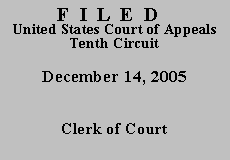

| UNITED STATES OF AMERICA, |
|
| v. | |
| RICHARD ALLAN BARRETT, |
I. Background and Legal Issues
The parties are familiar with the facts of the case and we need not restate them here. In cases such as this one where the district court denies a habeas petition on procedural grounds without reaching the underlying constitutional claim, a COA should issue if the movant shows that (1) reasonable jurists would find it debatable whether the petition states a valid claim of the denial of the constitutional right, and (2) reasonable jurists would find it debatable whether the district court was correct in its procedural ruling. Slack v. McDaniel, 529 U.S. 473, 484 (2000).
A. Booker is Not Retroactively Applicable
In Barrett's first petition before the district court, he asserted that his sentence violated the tenets of United States v. Booker, 125 S. Ct. 738 (2005). We agree with the district court that Barrett's petition is well outside the one-year limitations period set by the Antiterrorism and Effective Death Penalty Act (AEDPA). See 28 U.S.C. § 2244(d)(1)(A). In cases such as this one, where Barrett's conviction became final prior to the enactment of AEDPA, the one-year limitations period runs from the Act's effective date, which was April 24, 1996. Hoggro v. Boone, 150 F.3d 1223, 1225-1226 (10th Cir. 1998). Because Barrett did not file his initial petition until 2005, it is untimely.
Furthermore, even if the petition were not untimely, Booker does not apply retroactively to initial habeas petitions in criminal cases that became final before its effective date of January 12, 2005. See United States v. Bellamy, 411 F.3d 1182, 1184 (10th Cir. 2005). Barrett's conviction and sentence became final in 1998, long before the Supreme Court issued Booker on January 12, 2005. Accordingly, even if Barrett's petition were timely, the relief he seeks is unavailable.
B. Barrett's Successive Petition was Properly Construed by the District Court
Following the district court's denial order, Barrett filed what he describes as a Rule 60(b)(4) motion to relieve him from final judgment due to the judgment being void. The district court construed the motion as a second or successive habeas petition and transferred it to the Tenth Circuit. See 28 U.S.C. 2255 ("[a] second or successive motion must be certified . . . by a panel of the appropriate court of appeals[.]") On May 19, 2005, the Tenth Circuit dismissed the transferred petition.
This court has held that "Rule 60(b) cannot be used to circumvent restraints on successive habeas petitions." Lopez v. Douglas, 141 F.3d 974, 975 (10th Cir. 1998) (per curiam) (holding that petitioner's Rule 60(b)(6) motion was an implied application under 28 U.S.C. § 2244(b)(3)(A) for leave to file a second habeas petition pursuant to § 2254 in the district court). Thus, we treat a post-judgment Rule 60(b) motion filed in a habeas proceeding as a second or successive motion under AEDPA. See id. As such, the district court properly construed the filing as a successive petition, which required the court to transfer the matter to the Tenth Circuit.
To obtain our authorization to file a second § 2255 motion, Barrett was required to make the requisite showing under AEDPA, which includes establishing (1) newly discovered evidence that, if proven and viewed in the light of the evidence as a whole, would be sufficient to establish by clear and convincing evidence that no reasonable fact finder would have found him guilty of the offense, see 28 U.S.C. § 2244(b)(2)(B); or (2) a new rule of constitutional law, made retroactive to cases on collateral review by the Supreme Court, see 28 U.S.C. § 2244(b)(2)(A). As previously discussed, Barrett's successive petition does not rely on a new rule of constitutional law made retroactive to cases on collateral review by the Supreme Court, because Booker is not retroactively applicable to his case. Nor does Barrett bring to light new facts or cast doubt upon the sufficiency of the evidence against him. He therefore failed to meet AEDPA's requirements for successive petitions.
II. Conclusion
Accordingly, we DENY a COA and DISMISS these appeals. We deny Barrett's motions to proceed in forma pauperis.
Entered for the Court
Timothy M. Tymkovich
Circuit Judge
*. This order is not binding precedent, except under the doctrines of law of the case, res judicata, and collateral estoppel. The court generally disfavors the citation of orders; nevertheless, an order may be cited under the terms and conditions of 10th Cir. R. 36.3.
2. After examining the briefs and the appellate record, this three-judge panel has determined unanimously that oral argument would not be of material assistance in the determination of this appeal. See Fed. R. App. P. 34(a); 10th Cir. R. 34.1(G). The cause is therefore ordered submitted without oral argument.